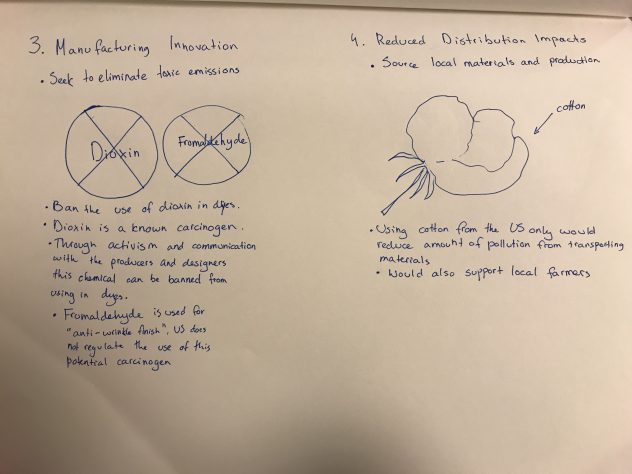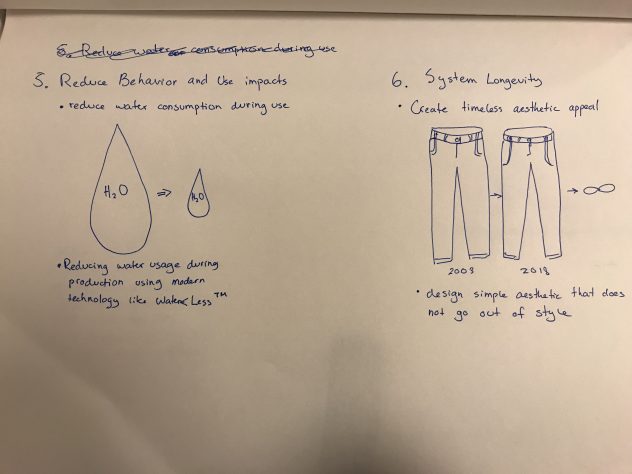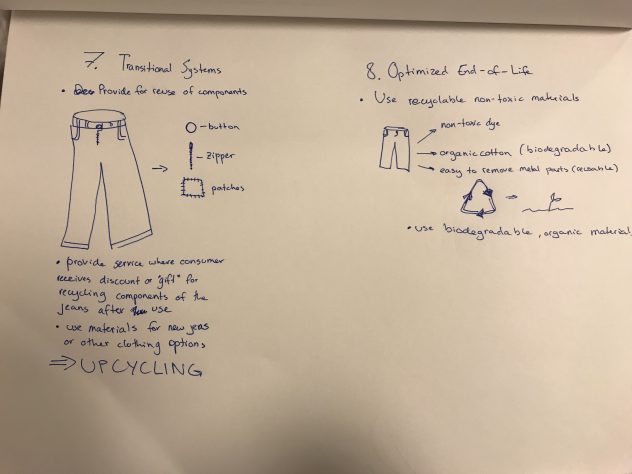JEANS – cotton, metal, dye
Cotton
- Extraction and processing: Cotton is extracted from a plant and goes through a long process to create the thread from which the fabric for the jeans is woven.
- Safety/toxicity: Cotton is organic, however there may be presence of toxic pesticides which could be carcinogenic. If the cotton is organic then it is safe and non-toxic.
- Responsible disposal: Cotton is renewable and biodegradable. Cotton can be recycled into other products, it is treated similarly to paper in recycling facilities.
Metal
D. Potential substitutes: only use 100% organic cotton.
Metal (zippers, buttons)
- Extraction and processing: The metal used for zippers and buttons in the jeans is typically made in brass, aluminum and nickel. The zipper is created by molding the metals into the shape. Zippers are mainly produced by the Japanese company YKK.
- Safety/toxicity: Mass produced in factories leading to pollution. The metals used are usually exported from China or India. The mining of these metals is often not done responsibly and leads to pollution, contamination and loss of biodiversity. Both the mining and production are harmful to human and environmental health. Transporting these zippers to the manufacturer also leads to fuel emissions.
- Responsible disposal: The zippers are made from non-renewable resources. However, the zippers can be reused. Over 20 years ago YKK pledged to be more sustainable and reproduces zippers from recycled materials. YKK is coinsous about producing the highest quality products and strives to be environmentally friendly.
D. Potential substitutes: Use polyester free zippers
Dye
- Extraction and processing: Dye is created using indigo, a natural dye extracted from the leaves of certain plants. On average a pair of jeans requites 3-12 grams of indigo. The indigo is extracted and oxidized which created the blue color. The fermented leaf solution is then mixed with a strong base like lye and powdered. After the the powder is mixed with other chemicals to create the desired dye. Historically it is a natural process, however a large percentage currently produced is synthetic.
- Safety/toxicity: While natural indigo is low in toxicity the mordants and other chemicals used to create the dye are highly toxic and in come cases carcinogens. The pecticides used for the actual plant are toxic and cause run-off and pollute nearby land and water. Natural dyes are more labor-intensive which is synthetic dyes are often used. If the chemical dyes are not treated properly they are harmful to the health of the factory workers as wealth as the environment.
- Responsible disposal: Before disposal the pH of the dye most be checked and the dye must be neutralized. Disposing irresponsibly will lead to pollution and potentially the eutrophication of nearby water sources.
- Potential substitutes: Use only organic dye that does not contain carcinogens and pollutants. Extract Inigo from farms that do not use toxic pesticides and fertilizers.
http://www.designlife-cycle.com/zippers/
https://www-materialconnexion-com.libproxy.newschool.edu/database/781301.html



